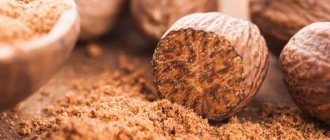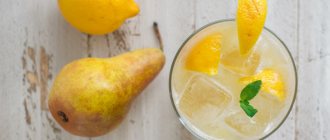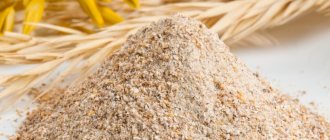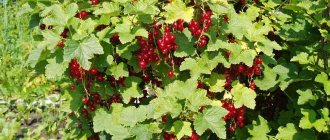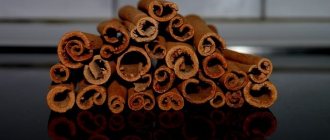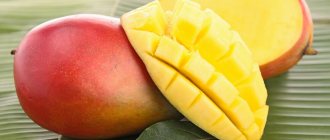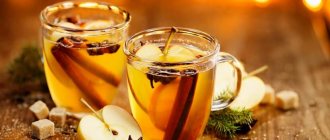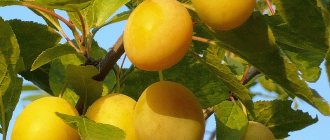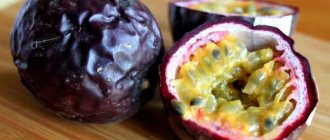The subject of today's conversation is the fruits of quince, the composition and benefits of which make it possible to include them in the prevention and treatment of a number of diseases, find their use in cosmetology and cooking, adding them to salads, meat dishes, baked goods, juices and compotes.
Quince is a fruit-bearing tree or tree-like shrub with lush foliage, the height of which can be from 1.5 to 5 meters. Quince flowers are large and solitary, and the strong fruits resemble apples or pears in appearance and are lemon or bright yellow in color. The taste of quince is sweetish-astringent (viscosity is present due to the abundance of tannins), slightly tart, the flesh is fragrant and not very juicy.
It is noteworthy that this fruit bush is more than 4000 years old. In the Caucasus, evidence has been found confirming the cultivation of quince in the prehistoric period. Quince fruits were used as offerings to the goddess Venus and were considered a symbol of love and abundance. This makes it one of the oldest cultures.
It is believed that the homeland of quince is Central Asia and Transcaucasia. You can most often find wild quince there. Uncultivated trees can also be found in eastern Russia. Quince cultivation began to be actively pursued in Crimea, Moldova, the north of the Caucasus and Central Asia.
Composition and calorie content of quince
Unlike other fruits, quince is practically not eaten raw.
Uncooked fruit, according to many experts, can even have a negative effect on intestinal function. That is why quince, before consumption, is amenable to various types of heat treatment.
The most popular cooking option is boiling. This allows you to make the fruits not only soft, but also give them sweetness, which makes their taste more pleasant.
Very often, quince is used to prepare various types of jam, as well as natural drinks.
Quince contains the following substances:
- Mineral salts
- Iron
- Phosphorus
- Copper
- Nickel
- Lemon acid
- Pectic substances
Quince is widely popular as a dietary product. This is due, first of all, to the fact that the calorie content of quince is only 40 kcal per 100 grams, which is significantly less than many other fruits.
An important advantage of quince is the absence of cholesterol.
At the same time, the fruits contain a lot of fiber, which has a positive effect on the digestion process and can be an excellent substitute for complex carbohydrates in a diet.
100 grams of quince contain about 9 grams of carbohydrates. As for proteins and fats, quince fruits contain no more than 0.6 grams, which once again emphasizes the benefits of this product in the dietary nutrition system.
Quince is a low-calorie fruit
Another advantage of quince is that it contains a significant amount of vitamins. In particular, this fruit contains B vitamins, which are found in plant foods only in small quantities. In addition, quince is rich in vitamins C and E, as well as many other microelements.
Who is contraindicated for quince?
You should not eat quince if you are constipated - it contains a lot of binding tannins.
Quince fruits are not recommended in large quantities for singers, presenters and people who have to communicate a lot and strain their voices, as they can worsen the condition of the ligaments and cause difficulty breathing. For the same reason, quince is also prohibited for pleurisy.
If you use quince for cooking dishes or decoctions, be sure to remove the seeds or make sure that they are not crushed, because inside them (like the seeds of many fruits) they contain a special substance called amygdalin. Despite its multiple benefits, if ingested, it transforms into cyanide, leading to serious poisoning.
Useful properties and applications
The positive properties of quince have been known in folk medicine for quite a long time. Since these fruits were introduced from Asia, they have been used as a mood enhancer.
Quince juice is considered a particularly useful product. It is used as an antiseptic and hemostatic agent. In addition, quince juice is considered an excellent medicine for strengthening the entire body, which is associated with the positive effect of vitamins and other substances on the immune system.
Quince juice is recommended to be consumed for:
- Diseases of the cardiovascular system
- Inflammation of the respiratory tract
- Vomiting due to poisoning
- Abdominal pain
- Bronchial asthma
- Diuretic dysfunctions
Not only the quince pulp, but also its peel is characterized by beneficial properties. The peel of the fruit contains no less substances necessary for the body and therefore it is often used for making compotes or jam.
In addition, there are a number of traditional medicine recipes that use quince peel. When dried, it is used to prepare an infusion, which is effective in treating sore throat, bronchitis, and colds.
When properly prepared, quince can be used as an antipyretic in cases where the increase in temperature was caused by an inflammatory process.
Quince is not recommended to be consumed raw.
In addition to the pulp and skin of quince, the leaves are actively used in folk medicine. Infusions prepared from quince leaves help normalize blood sugar levels, which is quite important for people suffering from related disorders.
It should be noted that quince also has certain negative properties. In particular, it is believed that various products made from this fruit have a bad effect on the vocal cords, and therefore they are not consumed by people whose professional activities involve the constant use of the voice.
Excessive consumption of quince can provoke the development of long-term constipation, but this is only true if the fruits were consumed fresh.
In general, quince has many beneficial properties, due to which this fruit is actively used in folk medicine to treat various diseases and strengthen the entire body. In addition, due to the fact that the calorie content of quince is very low, it will be an excellent addition to the diet.
Quince dishes
- Quince jam jelly and rose water
Ingredients:
- 2 kg quince, peeled and roughly chopped
- zest and juice of 1 lemon
- about 1½ kg sugar
- spoon of butter
- 1 tablespoon rose water
To make the jelly:
Place the quince, lemon zest and juice in a large saucepan. Add enough water to cover the fruit. Bring to a boil, then reduce heat and simmer for about 1 hour, until the quince is very tender. Strain but do not squeeze out the juice - leave it for at least 4 hours or ideally overnight until the juice has drained.
Place 3 plates in the freezer. Measure out the juice and return it to the pan. For every 1 liter of juice, add 750 g of sugar. Bring to a boil, stirring to dissolve the sugar, then cook until completely dry. This may take from 5 to 20 minutes. To test for doneness, place some on a chilled saucer, let sit for 1 minute, then run your finger through the juice. If it sets, the jelly is ready.
Remove from heat and skim off any scum from the surface using a spoon. Add oil to dissolve any remaining sediment, then add rose water. Seal in sterilized jars and store in a cool, dry place for up to 1 year.
- Baked quince
Ingredients:
- 8 quinces, unpeeled
- 750 g powdered sugar
- 3 cinnamon sticks, roughly broken
- 3 anise and cloves
- 2 vanilla beans, crushed, seeds scraped
Peel and divide the quince into two parts, remove the kernels (keep the skin and kernels) and place in water until needed.
Combine the peels and kernels with the sugar, spices and 2 liters of water in a large saucepan, stirring over medium heat until the sugar has dissolved. Bring to the boil, cook until ruby brown and leave (25-30 minutes), then strain (place syrup and solids separately).
Preheat oven to 80C or lowest setting. Place the quince in a deep roasting pan large enough to fit snugly in a single layer, then cover tightly with a layer of baking paper. Pour in the syrup, top with the peel and core, cover with a double layer of foil and roast until tender and pink (10-12 hours). Remove foil, skin, kernels and paper. Pour in your favorite sauce and enjoy.
Quince from the rose botanical family is one of the most ancient fruit crops on earth. Humanity has been eating this fruit for more than four thousand years. It has been proven that wild quince gardens in the Caucasus and Asia Minor existed in prehistoric times. And some historians are confident that it is the fruit of this tree that is described as the legendary “apple of discord” in the Old Testament. Quince has long been considered one of the apple varieties.
Today, dozens of varieties of this amazing woody plant have been bred. And people can enjoy the many flavors of quince fruits. True, it is almost impossible to eat them fresh - they are too tart and viscous, and in addition, they can cause serious digestive problems. But in jams, marshmallows, jellies, compotes and as a seasoning, quince simply has no equal!
conclusions
Quince is one of the fruits that is rich in beneficial substances. However, quince can be tricky. If you do not know some of the features of its use and application, you can get the opposite effect.
READ The benefits and harms of lime
Beneficial features
- Has anti-inflammatory properties.
- Useful for weight loss.
- Treats stomach ulcers.
- Treats diseases of the digestive system.
- Rich in antioxidants.
- Has antiviral properties.
- Reduces blood pressure.
- Reduces cholesterol levels.
- Contains anti-cancer substances.
- Relieves stress.
- Increases immunity.
- Helps with diabetes.
- Promotes the production of red blood cells.
- Improves eye health.
- Good for skin and hair.
- Useful for men and women.
Harmful properties
- Absolutely/partially contraindicated for certain diseases.
- Causes irritation of mucous membranes.
- Not for use with other medications.
- Quince seeds can cause intoxication.
With proper consumption of quince fruits, side effects and risks of complications can be reduced to zero. Follow all the above recommendations.
Dietary properties of quince:
Quince is a shrub or tree 1.5–7 m high, of the Rosaceae family. Quince grows in the south of European Russia. Quince fruits are used for medicinal purposes.
Quince fruits contain up to 12% fructose, glucose and sucrose, small amounts of malic, tartaric and citric acids, pectins, tannins, as well as ascorbic acid, some trace elements, in particular iron and copper.
Quince is consumed baked, boiled, or canned; It is used to prepare sauces for meat dishes and game. Essential oils contained in the fruit, especially in the skin, give quince dishes a subtle aroma and sour taste. Quince is widely used for dietary nutrition.
An extract is prepared from fresh quince, which is used for anemia.
Quince fruits have astringent, diuretic, hemostatic and antiseptic properties, while the seeds have emollient, enveloping, antiseptic and anti-inflammatory effects. Due to its astringent properties, quince has long been used for diseases of the gastrointestinal tract accompanied by diarrhea and bleeding. Quince is widely used as a diuretic for diseases of the cardiovascular system. Drink tea from quince seeds, rich in mucus, for acute respiratory diseases accompanied by cough.
Tea is drunk for tracheitis, bronchitis, gastroenteritis, spastic colitis, and flatulence.
Locally, a decoction of the seeds is used as a lotion for eye diseases, for rinsing with sore throats and as a cosmetic product that softens the skin. In pureed form, boiled fruits are sometimes used in the treatment of liver diseases and as an antiemetic.
In their raw form, the fruits are of little use for nutrition; in addition, they are considered harmful to the intestines, so compotes, jams and soft drinks are prepared from them. To prepare the juice, quince fruits are placed on shelves after harvesting and kept for several weeks so that they finally ripen.
Quince is widely used in cooking in many countries. Included in elite white wines (Chenin Blanc, Sauvignon Blanc and even Chardonnay.)
Quince slices are added to cabbage soup or borscht; they add a unique sour taste. Since ancient Greek times, quince has been baked with honey; in oriental cuisine, the fruit was stuffed with minced beef or beans. After heat treatment, quince is used as a side dish for poultry or meat, and also as a seasoning for preparing national dishes such as pilaf, beef soup with quince, bozbash (lamb) and many others.
Using Japanese quince fruits for food, step-by-step recipes with photos
Japanese quince is a long-liver; with good care, the shrub can live in one place for up to 80 years. It has dark green shiny leaves with large charms. Flowering occurs in late spring. The flowers are large, reaching 7 cm in diameter, collected in 2-6 inflorescences on the lower or middle part of the shoot.
It is very difficult to pass by a beautiful flowering bush
By the end of September the fruits begin to ripen. Light green, bright yellow or deep orange fruits look great against dark green foliage. Weight ranges from 20 to 100 g depending on the variety. The taste is tart, with a sour lemon aroma. Harvesting begins before the first frost.
During the first fruiting, the bush can bear up to 5 kg of fruit.
Nevalis. The medium-sized shrub grows in height and width up to 2 m. It blooms with snow-white flowers from May to August.
Pink Lady. A low-growing shrub, reaching up to 1.5 m. Dark pink flowers appear on a wide crown in early summer. The flowering is beautiful and long lasting.
Jet Trail. Decorative appearance with creeping shoots. The specimen has no thorns; the shoots with snow-white flowers are originally curved into an arc.
Quince is great. A strongly branched shrub reaching a height of up to 1.5 m. The plant blooms with red flowers, does not need pruning and is used as a hedge.
Chaenomeles japonica (Japanese quince) is a close relative of apples and pears. It belongs to the rose family and grows as a shrub or tree. The height of adult specimens reaches 5 m. The bark is dark, with a reddish tint. The leaves are oval, with a heart-shaped base and a blunt end. Some varieties have wider, elliptical leaves. It blooms in spring with rather large, fragrant white-pink flowers.
The fruits in appearance and consistency are somewhere between an apple and a pear. The fruit tastes sour, with a characteristic strong aroma. The skin is covered with fluff. Cultivated varieties produce large fruits with better taste characteristics. The medicinal properties of the fruits of cultivated and wild trees are identical. In Russia, quince grows mainly in the southern regions.
The fruits of Chaenomeles ripen in the fall – in September–October. It is at this time that especially healthy, unprocessed fruits arrive on store shelves.
How to use quince
While raw quince is only for everyone, it has easily found its rightful place in cooking. Dishes decorated with quince pieces look very appetizing. And meat (be it beef, duck, goose and especially lamb) is an unsurpassed gastronomic luxury! The meat is soaked in fruit juice, and the quince is soaked in meat and it turns out tasty and very aromatic. Prepare dishes with quince for the festive table.
Recipe for baked pork with quince and potatoes
The recipe was shared by a publicist, a Bradmaker, a witty blogger, and the author of a number of home cooking recipes, trusted by time and members of his family.
